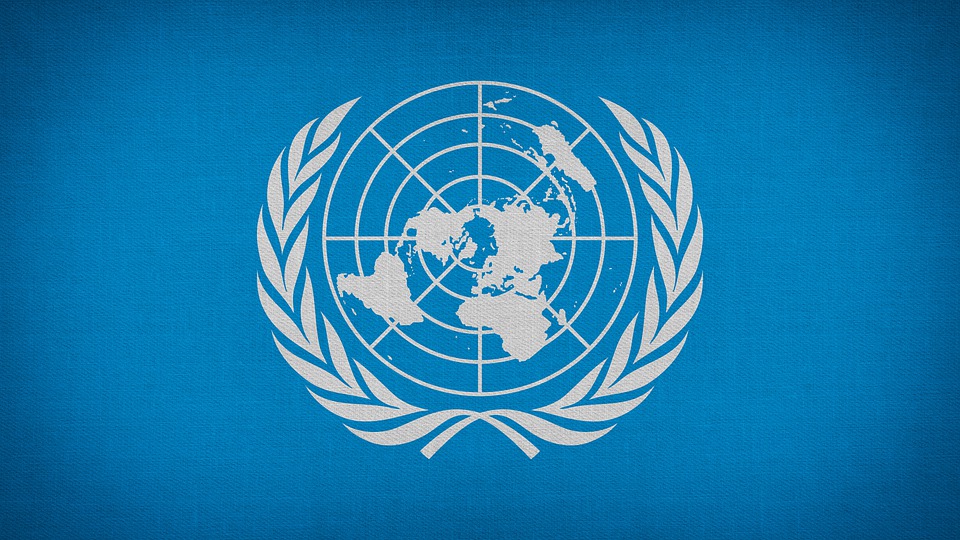PeB Journal | Conflict Resolution, Global, International Politics |
By Silvia Samorè
Fifteen years have now passed since 2005, when the definition of Responsibility to Protect (R2P) was agreed by the 191 states signing the World Forum Outcome document. The adoption of this decision was perceived by the international community as a progress, but many things have changed since then. In fact, when the concept was first applied in 2011 in Libya, it proved to be very tricky in terms of International Law boundaries compared to the actual implementation of the UNSC resolutions by the external actors involved. This is one of the main reasons that led to a substantial avoidance of this framework when the civil war in Syria erupted.
Since the theoretical background could not be summarized in just a few lines, it is my intention to provide you with an overview on the subject in this brief article, and then, in a further note, I will try to reflect on the current applications of this doctrine, considering that the pandemic is likely to increase instability especially in fragile States, and cause the eruption or reignition of conflicts and violence against civilian populations.
Responsibility to Protect: a definition
Responsibility to Protect can be defined as a political commitment to cease any kind of mass atrocities, genocides, crimes against humanity and other forms of indiscriminate violence. In particular, it is aimed to conciliate the prerogatives of each State to be independent and not to suffer for external interferences with the obligations that the international community has not to ignore suffering populations, as it had happened in the past.
The doctrine consists of three pillars: firstly, each State has the primary responsibility to protect its citizens from crimes against humanity, genocides, mass atrocities, ethnic cleansing and war crimes. Secondly, the international community has the responsibility to assist the States in this task. This concept is paramount in order to avoid misconceptions: RtoP does not justify external interventions in domestic affairs of the States in general, it tries to give some guidelines aimed at facing situations of humanitarian emergencies instead of ignoring them. However, the first actor which should intervene is the involved State itself. Only if it is unable to or it is the direct perpetrator of the crimes, the community of the States can act in favor of the civilian population. Thirdly, the international community should use appropriate peaceful, humanitarian and diplomatic means to fulfill the aim. Consequently, the protection is meant to start at diplomatic level, then proceed with economic and financial sanctions, and if the previous steps fail, carry on with a military operation as the ultima ratio (UN, 2005).
In addition to this, RtoP can be articulated in three main elements:
· Responsibility to prevent;
· Responsibility to react;
· Responsibility to rebuild.
Diplomacy and soft power are the most useful tools in preventing international crimes and their employment is preponderant in addressing the root causes of internal crisis or conflicts that could put the populations in danger. Only if these actions fail and the crimes are actually perpetrated, the community of the States has the duty to react to them, that means that the UN should decide which instruments are better to tackle the problem, military power included.
Rebuild is the last task that the international community has assumed in order to reestablish the former order or, in most of the cases, to improve it. For this reason, we can state that RtoP regards crimes against humanity even before they were committed, from the creation of the conditions to the aftermaths of the military intervention (Greppi, 2011[1]).
The difficult path from the Humanitarian decade to RtoP
The ideas behind the concept of RtoP are strictly related to some specific milestones which characterized the so called “Humanitarian decade”[2], in particular the establishment of operation Provide Comfort after the invasion of Kuwait in 1991, the Rwandan genocide in 1994 and Kosovo bombing in 1999. In both these last cases, the UN was substantially unable to establish an effective peacekeeping mission, disappointing the expectations of the international community in this regard. In the case of Rwanda, the majority of the States did not recognize any duty of intervention and many of them did not accept to take part in the peacekeeping operations promoted by the UN. This brought to a great reflection upon the theme, putting the basis to a new interventionist push. However, once again the international community was disappointed by the events of Kosovo. In this occasion, in fact, the action of the UNSC was stuck because of political disagreements among its permanent members and the impasse was only overcome with the intervention of NATO. Because of the lack of authorization, it was widely criticized by the public opinion and, on the other side, welcomed by the supporters of humanitarian actions. On the one hand, critical voices pointed out the necessity to reaffirm the prohibition of the use of force without the specific authorization of the UNSC, while on the other it was seen as a solution for the growing violence perpetrated by the States toward their citizens. In fact, whether the UNSC was unable to intervene because of political disagreement, following this example the States of the international community have the responsibility and the right to do so in order to protect the suffering populations[3].
After Kosovo, the debate within the UN was stiffened between the position of “internationalists”, in favor of the intervention, and “sovranists”, against interferences of any kind in the internal politics of the States. Thanks to the mediation of the Secretary General Kofi Annan, a new reflection on the concept of sovereignty was undertaken by the International Commission on Intervention and State Sovereignty (ICISS) created by the Canadian government in 2001, which produced in one year a report with the title Responsibility to Protect. The general framework of this work was the concept of “human security” elaborate by the UN at the beginning of 1990s and what emerged from the ICISS publication is a changing perspective that would have led to the reconsideration of the legitimacy of military intervention aiming at human protection.
In order to overcome the dilemma of humanitarian intervention, sovereignty should be redefined as the responsibility of the States to safeguard their citizens, as theorized by the UN representative Francis M. Deng[4]. The new focus on the debate changed from the “right of intervention” to the “rights of the population to be safe” and the duty that the international community has in their regards. From this point of view each State has the primary task to make sure that human rights are respected, only if it is unable or unwilling to do so, the others can intervene respecting the criteria for the military action set by the ICISS and rooted in the Law of Armed Conflicts. In particular, military power should remain the last possibility in case of humanitarian emergency, that is why, military action has to meet four criteria: right intention, principle of the last resort, proportionality and the principle of reasonable perspective of success.
In these specific conditions to be met in order to intervene, we can see the effort of giving a normative framework to the doctrine. In particular, the ICISS pointed out the important role of the UN in the authorization and legitimation of this kind of actions, even if the Commission maintained the option of exceptional procedures undertaken in case of paralysis of the UNSC. The specific focus on the responsibility of every single State was aimed to increase and strengthen the concept of sovereignty and to present the external intervention as ultima ratio to avoid other situations like Rwanda and Kosovo.
Conclusions
Despite the efforts of the ICISS, the report was welcomed with different attitudes among the international community. Unilateral intervention was still looked upon with suspicion, particularly after the US invasion of Iraq in 2003, that was justified when G. W. Bush used human rights rhetoric, delegitimizing it. To raise the attention on the issue one more time, Kofi Annan decided to institute the High Level Panel on Threats, Challenges and Changes in 2003 out of which came a slightly different version of RtoP, more focused on the rule of law than on the use of force. The doctrine was in the end inserted in the final document of the World Summit in 2005 and the debate around the theme shifted to the problem of making it more operational than theoretical (Scuccimarra, 2016)[5]. However, the first time the UNSC used this framework was in 2011 during the civil war in Libya. After that, the debate turned on because of the ample criticism raised about the concrete actions undertaken in this context. In fact, the UN mandate was partly ignored by the intervening forces, who de facto took part in the fighting and helped the insurgents. The Syrian case, in addition, highlighted that the doctrine still has weaknesses and causing the reluctance of the International community in using it.
After 15 years it is time to reflect upon it and focus the attention on the fact that the world is getting more and more fragile because of the pandemic. Shall peace and conflict analysts insist in adopting this paradigm, at least in a preventive perspective, or do we need new doctrines on the theme? This question will guide my research activity for a further brief note on the subject, hoping to have stimulated your curiosity and willingness to contribute to the debate.
About the author: Silvia is part of the editorial board of Pax et Bellum Journal. She has obtained a Master degree in Strategic Studies at the University of Turin and an MA in International Military and Strategic studies at the Centre for High Defence Studies in Rome. Her main academic interests include post conflict operations and human security issues in peace building. Despite being Italian, she would rather drink tea than coffee.
References
[1] Greppi E. (2011), Recent Developments in Arab Mediterranean Countries: A Case of Responsibility to Protect?, Quaderni di Relazioni Internazionali, ISPI: Milano.
[2] Scuccimarra L. (2016), Proteggere l’umanità (Protecting Humanity), Il Mulino: Bologna.
[3] Ibid.
[4] Deng, Francis M., et al. Sovereignty as Responsibility: Conflict Management in Africa. Brookings Institution Press, 1996. JSTOR, www.jstor.org/stable/10.7864/j.ctv80cc8b. Accessed 26 Nov. 2020.
[5] Scuccimarra L. (2016), Proteggere l’umanità, Il Mulino: Bologna.

